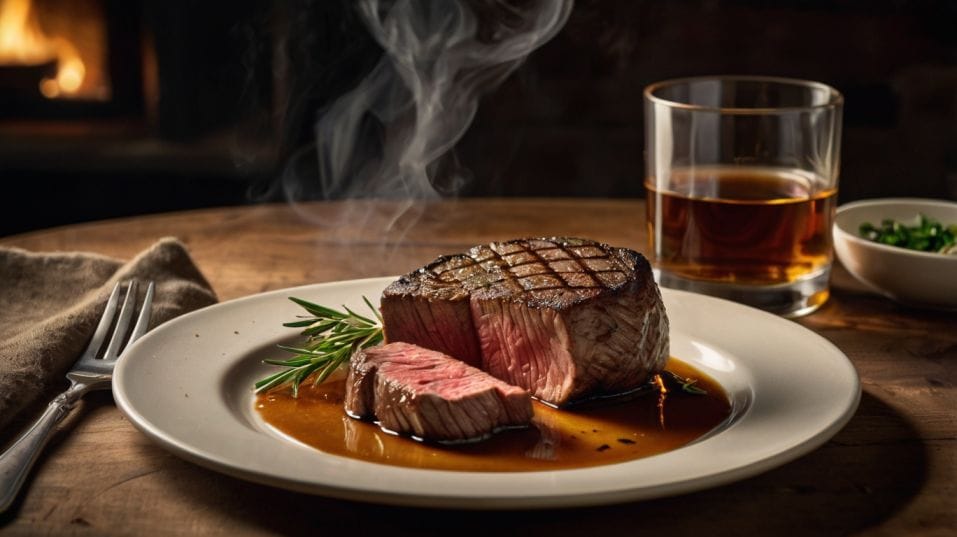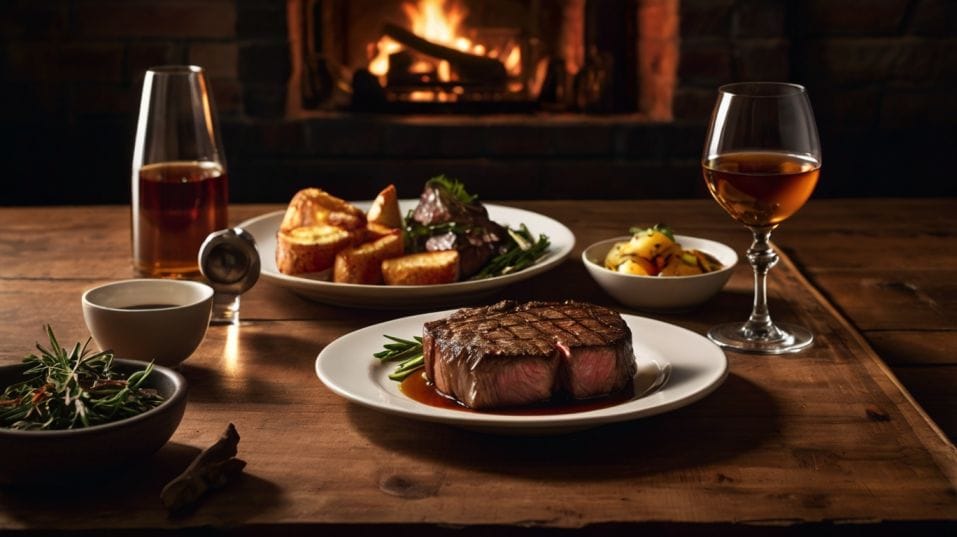Pairing Peated Scotch with Savory Foods
Learn how to pair peated Scotch with savory foods. Discover real-world tips to balance bold whisky and unlock deeper flavor with every bite.

Ever wonder why some people are obsessed with smoky Scotch—and others can’t stand it? The secret might not be in the glass, but on the plate.
Peated whisky can taste harsh, strange, even off-putting—until you pair it with the right savory food. Then it shifts. Smoke becomes depth.
That funk starts making sense. This guide shows how to turn peated Scotch into your flavor ally, using bold dishes that tame, balance, and unlock what’s really inside the dram.
The Power of Peat: What You’re Dealing With
Peat is decayed vegetation compressed over millennia and burned to dry malted barley. It sounds simple, but it turns Scotch into something primal.
The resulting smoke can taste like iodine, campfire, seaweed, diesel, or dry-cured meat—depending on where the peat came from and how the distillery handles it.
The mistake people make is treating it like a gimmick or novelty. It's not. Peat isn't just "smoky." It's complex.
It's layered. And when you put it next to the right kind of food, its edges shift. You’ll start noticing things like malt sweetness, citrus, honey, or salted caramel where before it was just fire.
So what does peat want? It wants food with depth. Not flashy, sugary, or overly spicy. It wants real savory weight: fat, umami, salt, char, and structure.

Umami: The Shortcut to Flavor Harmony
Start here. Umami-rich foods—the ones that taste like depth and richness without sweetness—are where peated Scotch shines.
Think mushrooms, cured meats, hard cheeses, soy sauce, anchovies, miso, roasted game, or bone broth. These aren’t "safe" flavors. They stand up to peat and, more importantly, interact with it.
Let’s say you're drinking a heavily peated Islay Scotch. Alone, it might taste like sea spray and burning leaves.
Pair it with a seared ribeye, and suddenly it starts revealing caramel and citrus notes you didn't notice before. That’s the point—not just to match flavors but to unlock new ones.
Even something as basic as sautéed mushrooms in butter can do the trick. The earthy savoriness pulls the malt forward, softening the smoke and bringing balance.
Add a little salt or aged cheese, and you're basically hacking the flavor structure of the whiskey.
Salt and Fat: Your Best Friends in Peated Pairing
Salt doesn’t just balance the whiskey—it opens it up. Just like a few drops of water can unlock hidden aromas in a glass, salty food can pull back the curtain on peated Scotch’s more delicate flavors.
Not sugary caramel—salted caramel. Not sweet fruit—preserved fruit, or citrus peel, or briny olives.
Fat, meanwhile, plays a different role. Fat coats your mouth, calms the burn, and slows down the hit of the alcohol.
It gives the whiskey time to expand on the palate. This is especially useful with high-proof or heavily peated expressions that might otherwise just bulldoze your taste buds.
Think about pork belly, duck confit, foie gras, or even a soft-boiled egg. These aren’t delicate flavors—but they’re perfect for holding peat in place long enough to taste what else is going on.
Char and Smoke: Not Redundant, Just Right
You might think smoke-on-smoke is overkill. But when done right, it’s one of the most effective pairings. Peated Scotch wants other roasted, grilled, or smoked elements to bounce off of.
The trick is contrast within the same spectrum—like pairing smoky whiskey with charred meat that has a juicy, savory center.
Barbecued lamb, grilled octopus, fire-roasted eggplant—these give you the smoke and the succulence. The result? The whiskey’s smoke doesn’t feel like the main event anymore.
It becomes integrated. That’s the level you want to hit. When the peat no longer tastes like a separate thing, but like something woven into the meal.
Bonus: smoky food can also tease out sweetness from the whiskey. It’s not the sugary kind—it’s more like burnt sugar, molasses, or toffee. The darker, the better.
Texture and Temperature: The Overlooked Details
Peated Scotch changes depending on the temperature of what you're eating. Cold food makes peat taste harsher—more iodine, more phenol, more sharp edges.
Warm or hot food helps the whiskey expand. This isn’t wine. You’re not trying to chill or refresh. You want interaction.
Texture is another tool. Creamy dishes—like mashed potatoes, polenta, or risotto—can soften a rough, medicinal dram and reveal its rounder sides.
Anything with a velvety or gelatinous quality (bone marrow, pork shoulder, even a runny yolk) will give the whiskey a platform to evolve.
One technique: take a bite, let it coat your palate, then sip the Scotch slowly. Don’t gulp. Let the whiskey move through the texture.
You’ll start to notice how certain flavors echo, how others get quiet, and how the peat bends depending on what it's chasing.
Where It Falls Apart
Not everything plays nice with peat. Here's what to avoid if you don’t want to waste your whiskey:
- Spicy food. Chili heat stacks with alcohol burn. You won’t taste the peat, just pain.
- Sweet glazes or sauces. Sugar blunts complexity and makes peat taste metallic or bitter.
- Highly acidic dishes. Think citrus-forward ceviche or vinegar-heavy salads. These clash with the peat’s earthiness and distort its structure.
Also: don’t try to drink peated Scotch through a "wine pairing" lens. This isn’t about refining a menu or matching notes on a chart. This is about trial, error, and knowing what flavors make whiskey come alive.
Final Thoughts
If you’re serious about whiskey, peat isn’t optional—it’s essential. But tasting it on its own only gets you so far. Pair it with food, and you unlock a deeper understanding of what it can do.
Smoke becomes sweetness. Funk turns into finesse. Complexity stops being abstract and starts being tangible.
Don’t wait for the perfect occasion. Pick a smoky bottle. Cook something with backbone—fat, salt, umami, char.
Pour, taste, adjust. Build your palate through real experience. Your next favorite pairing isn’t on a tasting menu. It’s waiting in your kitchen. Try it today.




